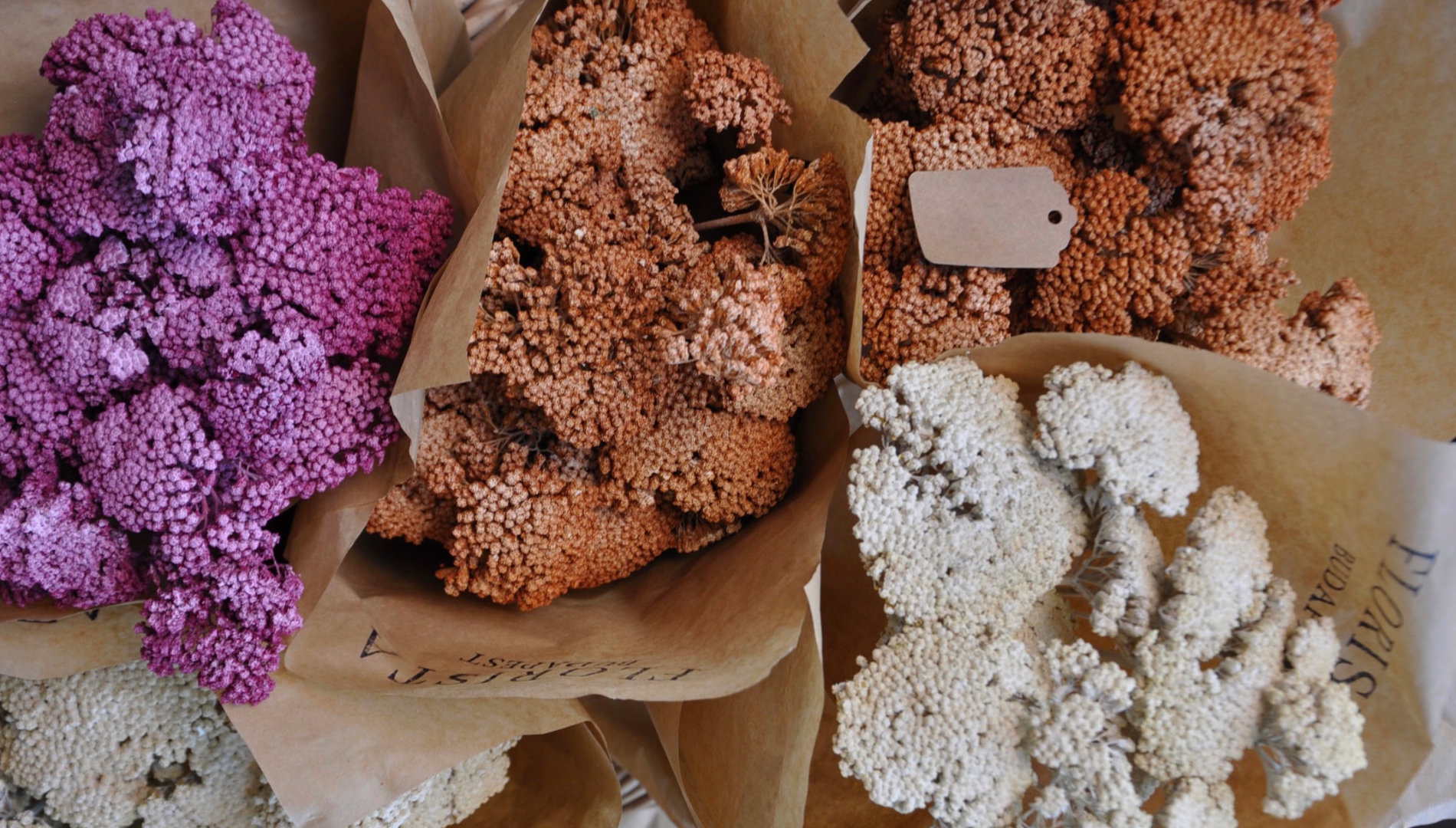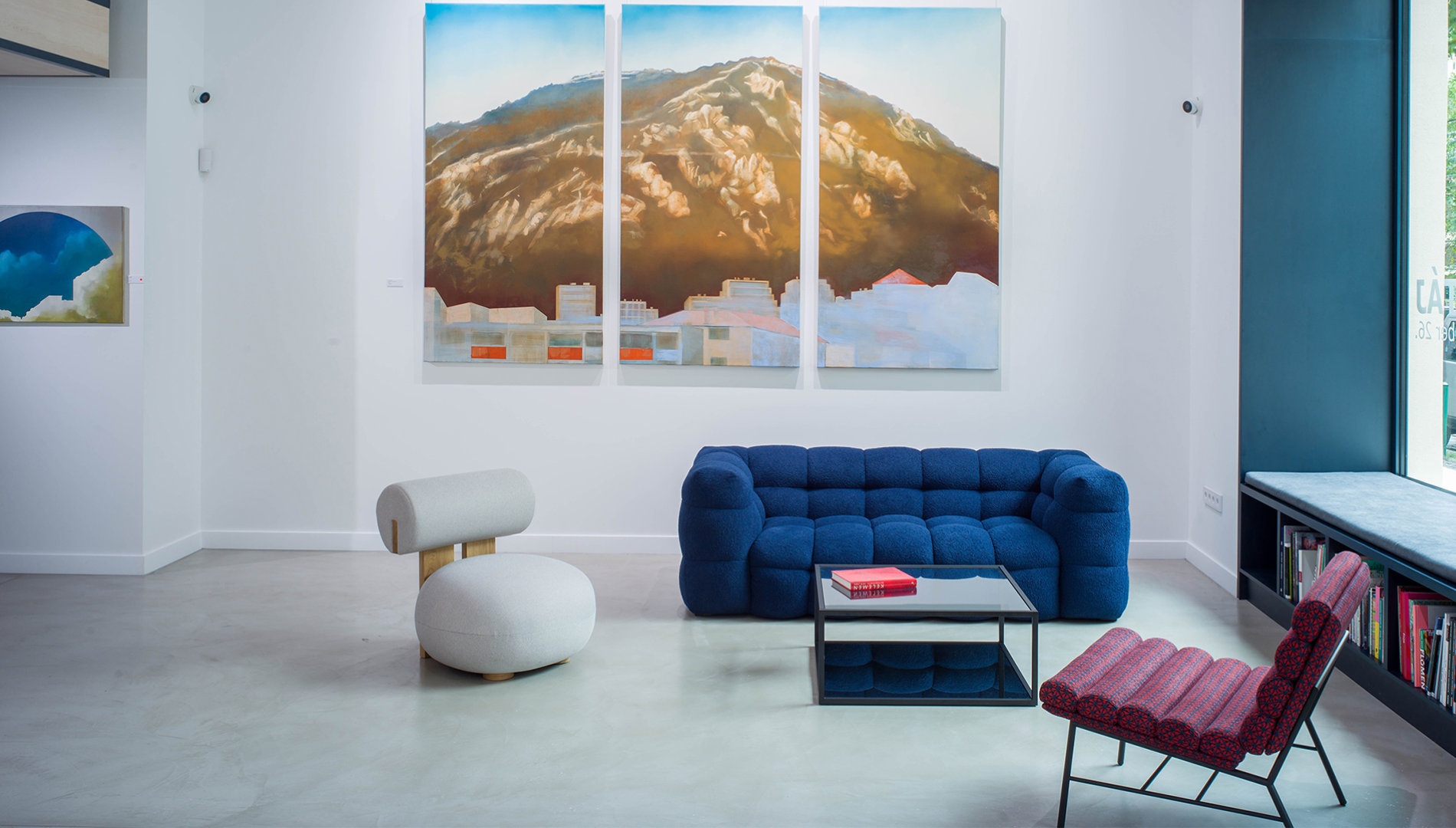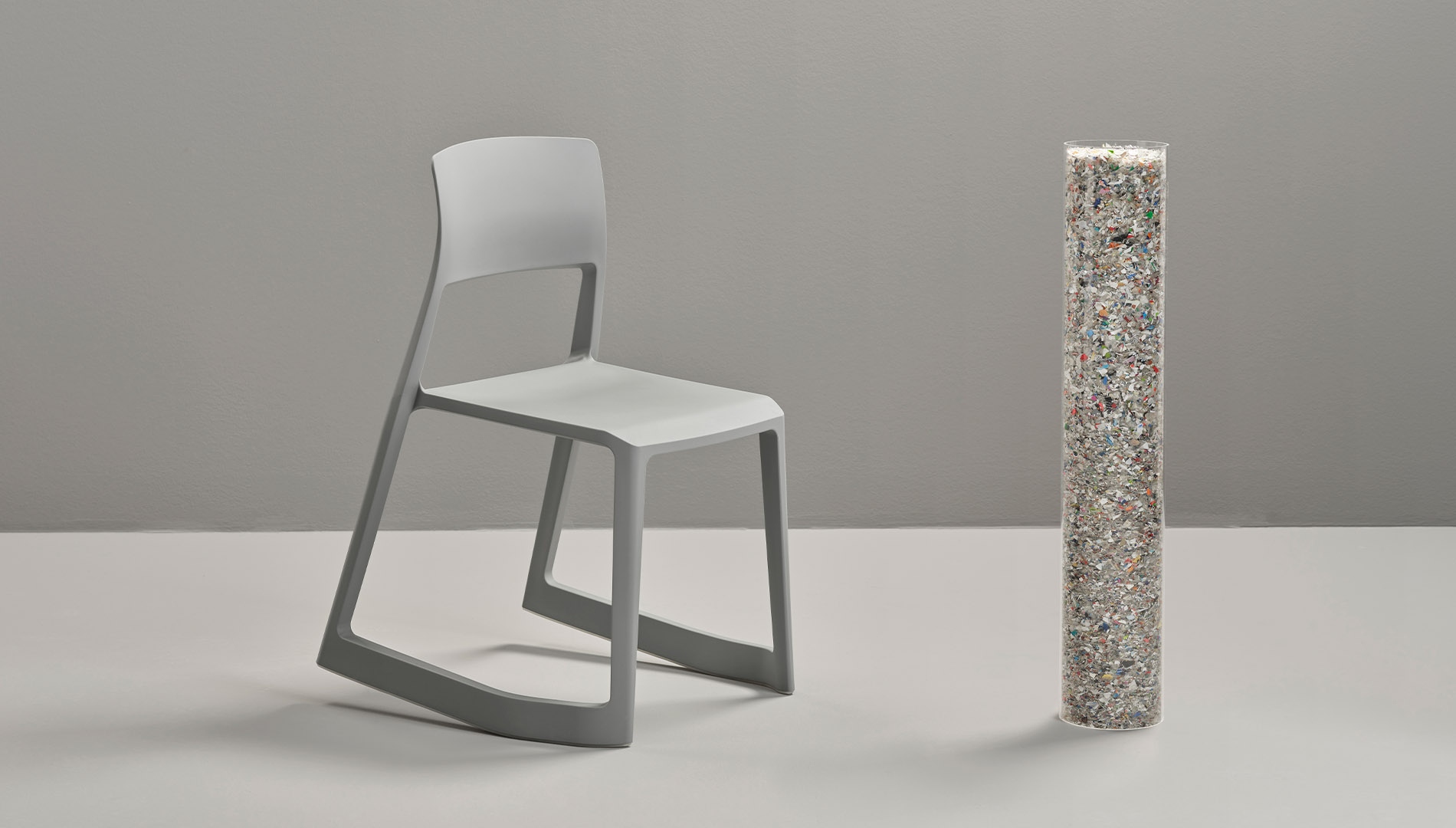
The REbirth of an icon
Founded in the very middle of the 20th century, vitra has since become an unmistakable presence at the forefront of contemporary design and groundbreaking technical innovation. Throughout the years the Swiss manufacturer never stopped going out its way to find new partners for bringing its uncompromised vision to life, often including the best of design and architecture. Charles and Ray Eames, Frank Gehry, Alexander Girard and Zaha Hadid are just the tip of the iceberg when it comes to the diverse, colorful minds behind that signature Vitra look. Vitra launched its Home Collection 17 years ago and continues to adapt to the most pressing demands of our contemporary world. Vitra will feature again at S/ALON BUDAPEST this year thanks to pointone / pointzero, and in our latest article we asked them about their vision for the future, their approach to sustainability and much more.
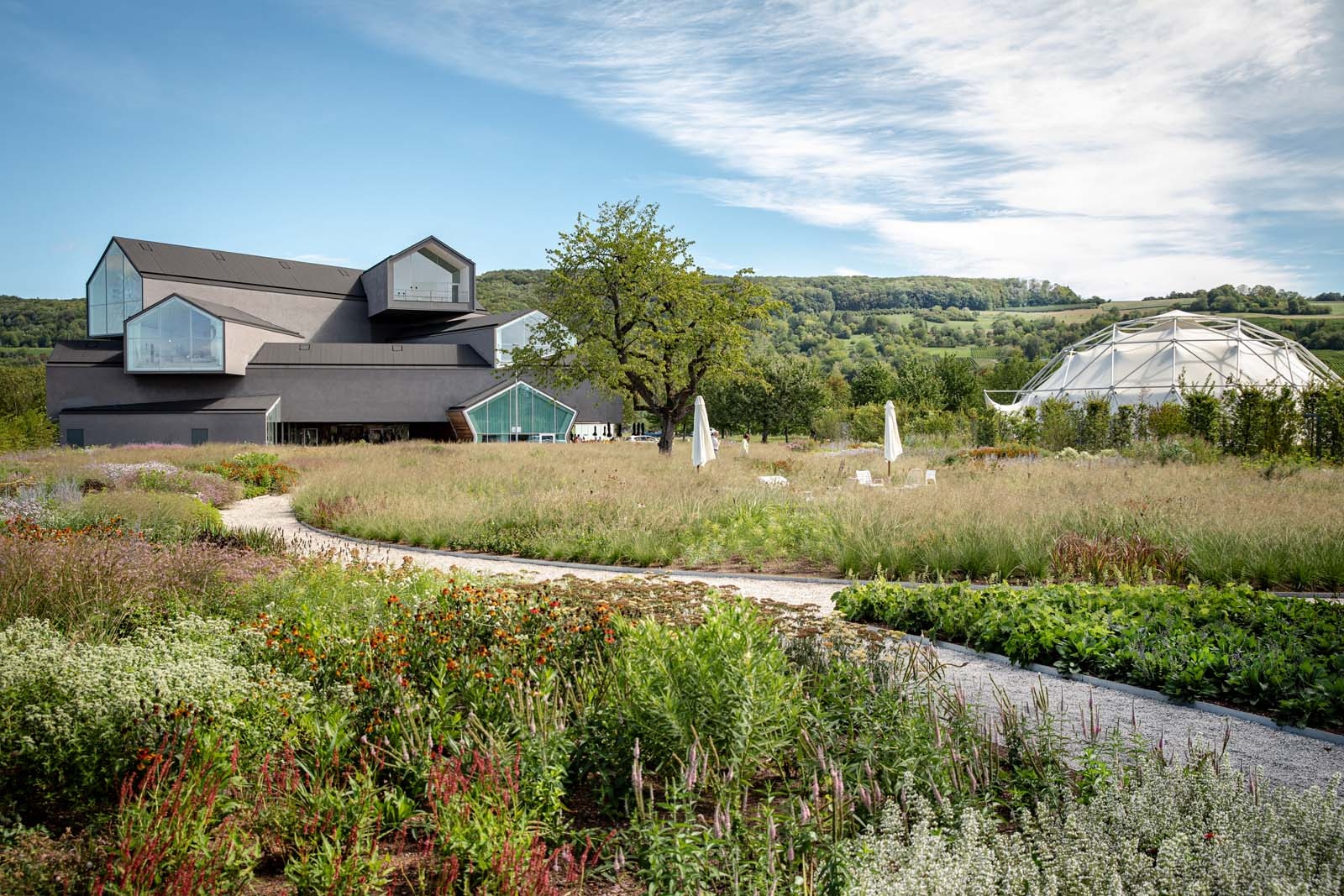
Oudolf Garten at Vitra Campus / Piet Oudolf
Vitra has always been a pioneering force in good design. According to you, what are the most important aspirations of furniture design in 2021?
In recent years, the aesthetics of interiors and objects have been pleasing and pretty, even subdued. In fact, they did not look much different from the modern interiors of the 40s and 50s. As tragic as the COVID pandemic is, we will conquer it eventually – and once we have, we will yearn for an aesthetic that is forward-looking and exciting, that promises hope for a better future. Our surroundings influence our thoughts and feelings, every day, every minute. We should all call for an aesthetic in the 2020s that is bright, optimistic, colorful, positive, powerful, happy. This aesthetic has circularity and sustainability built in.
In your opinion, what makes a piece of furniture sustainable?
Vitra’s greatest contribution to sustainability is the creation of products that omit non-essential elements and last a long time. Our roots in modern design would allow nothing else.
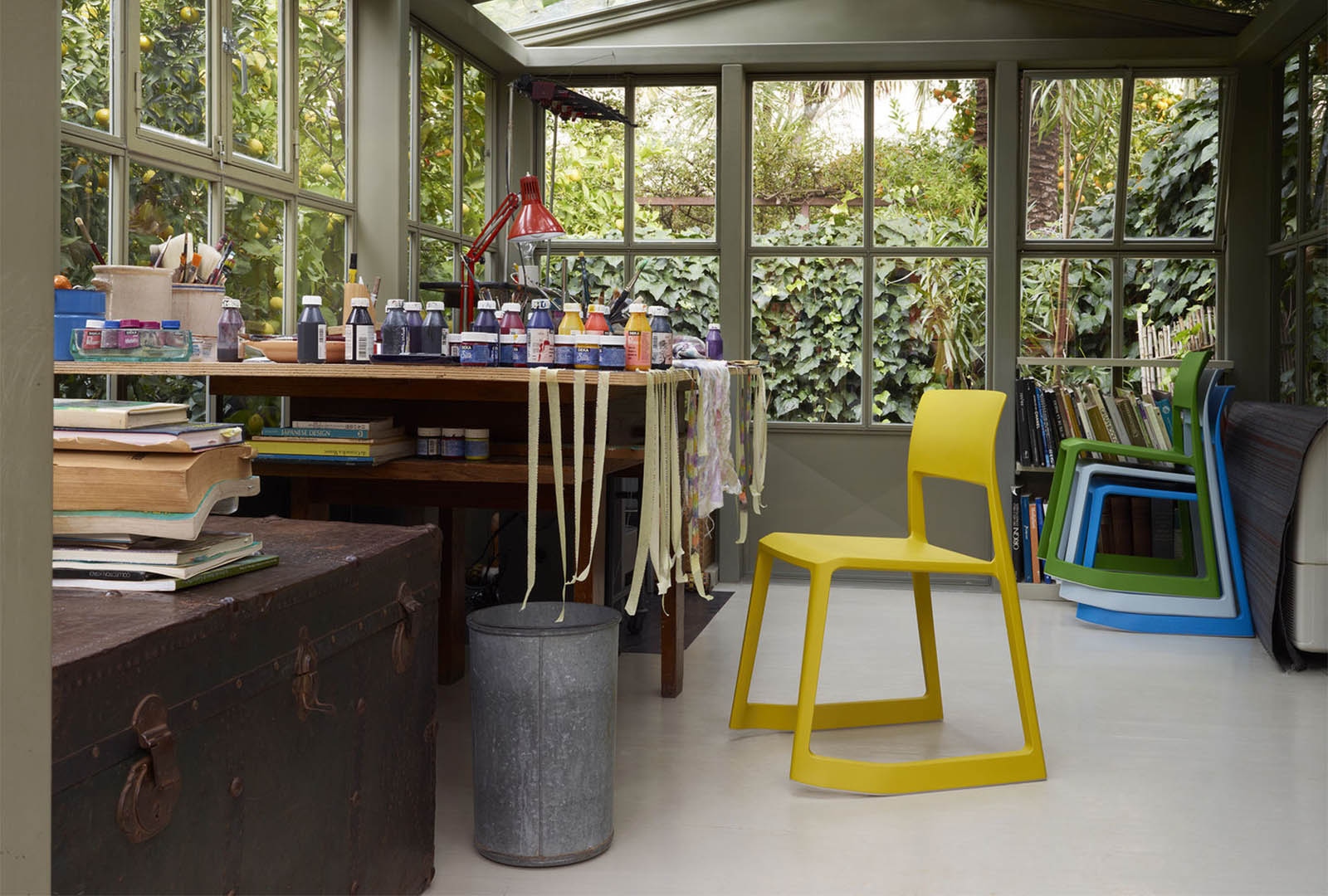 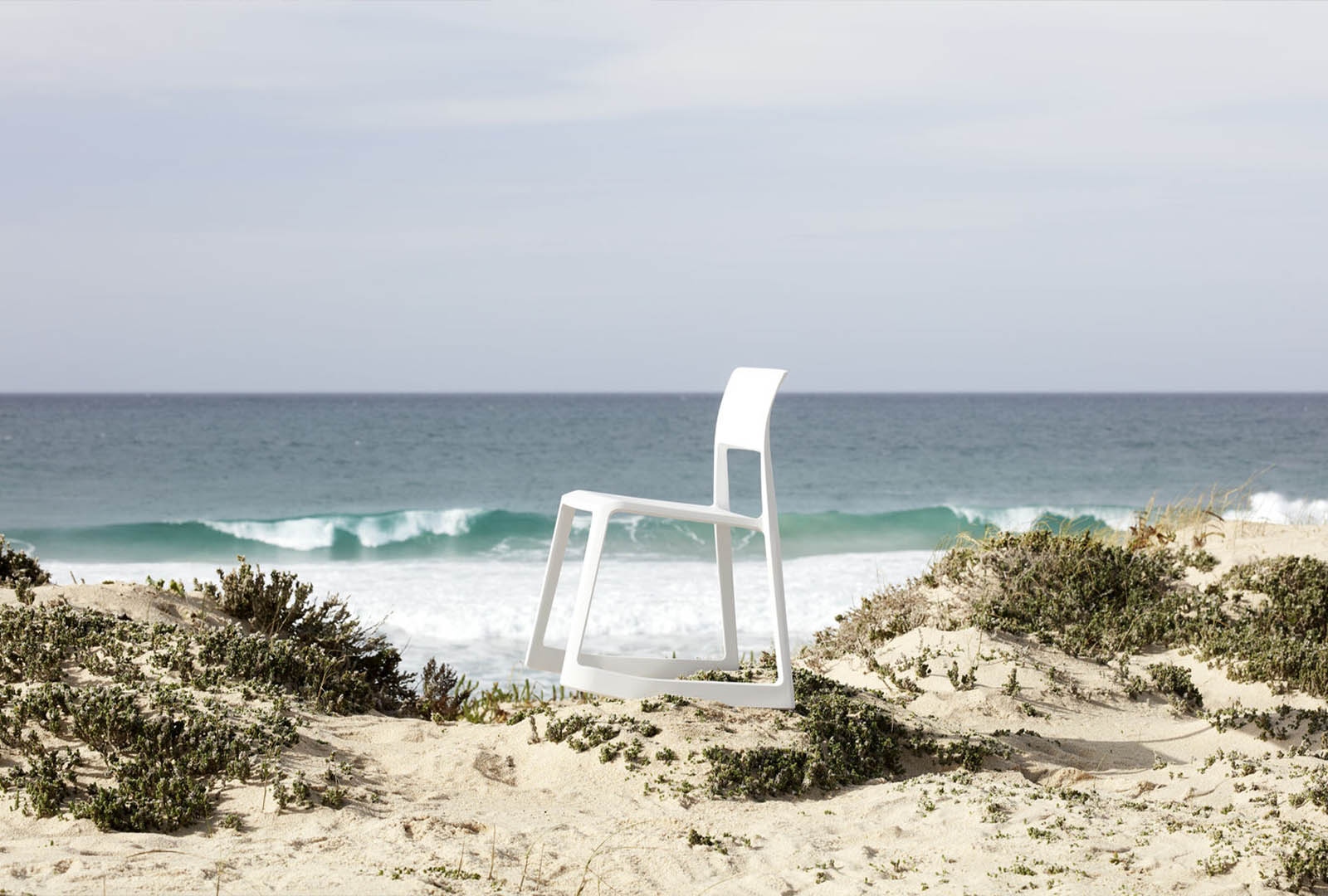 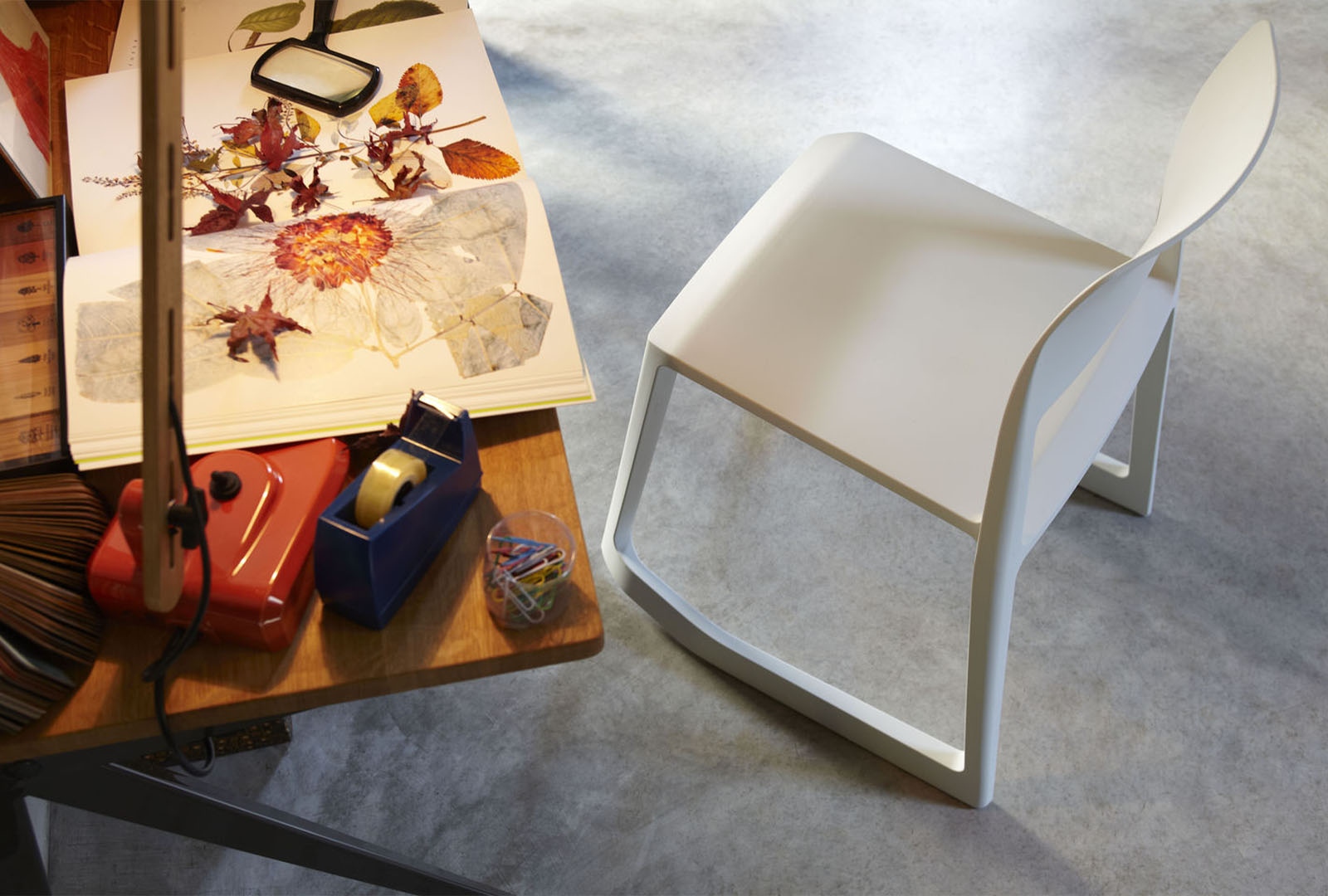 |
The original Tip Ton chair
The famous Tip Ton chair came to be 10 years ago. What was the inspiration behind the original design?
In 2008 the Royal Society for the Encouragement of Arts, Manufactures and Commerce asked the British design duo Edward Barber and Jay Osgerby to develop a concept for furnishing the new Royal Society of Arts Academy in Tipton. They combined their planning efforts with a search for suitable furniture – and discovered a gap in the market for school chairs compatible with 21st-century learning methods. Barber and Osgerby embraced the challenge that this situation presented. They compiled a list of the ergonomic, economic and aesthetic characteristics that they felt should be incorporated in a modern school chair for young students: indestructible, light, easy to produce, quiet, stackable, colourful and fully recyclable. And it should allow movement. This complex brief called for a revolutionary chair – for a new way of sitting.
To adhere to modern standards, Tip Ton RE was created, which is a sustainable version of the original piece. What does this mean exactly in this case?
Tip Ton RE is based on the principle of the circular economy. The manufacturing process utilises a synthetic granulate derived from waste packaging. The properties of this high-quality recycling material from Germany are based on the collection of household waste – consisting of used packaging – in the so-called ‘Yellow Bag’. Utilising this alternative to petroleum-based primary plastics lowers climate-damaging emissions and also achieves a significant reduction in primary energy consumption.
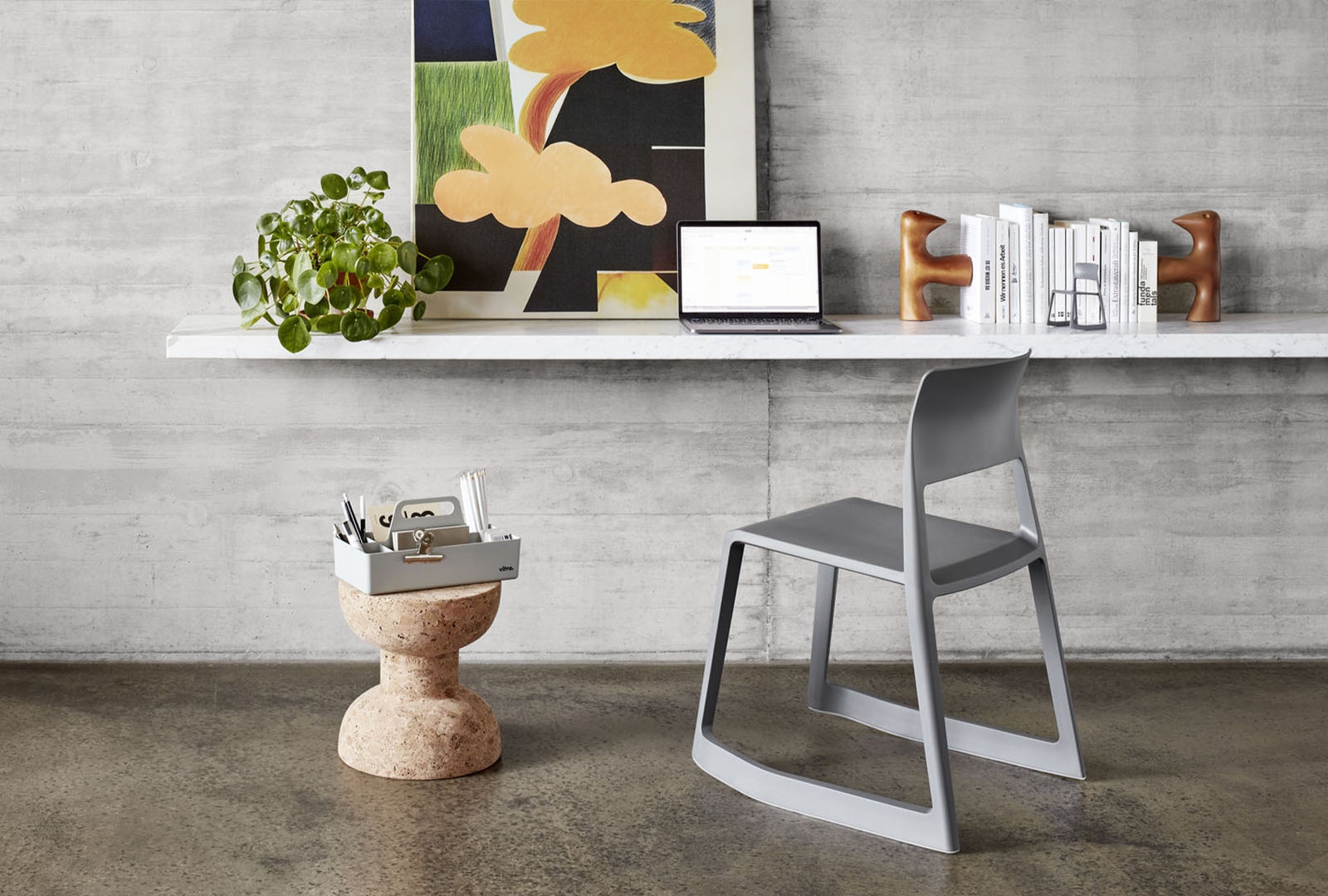 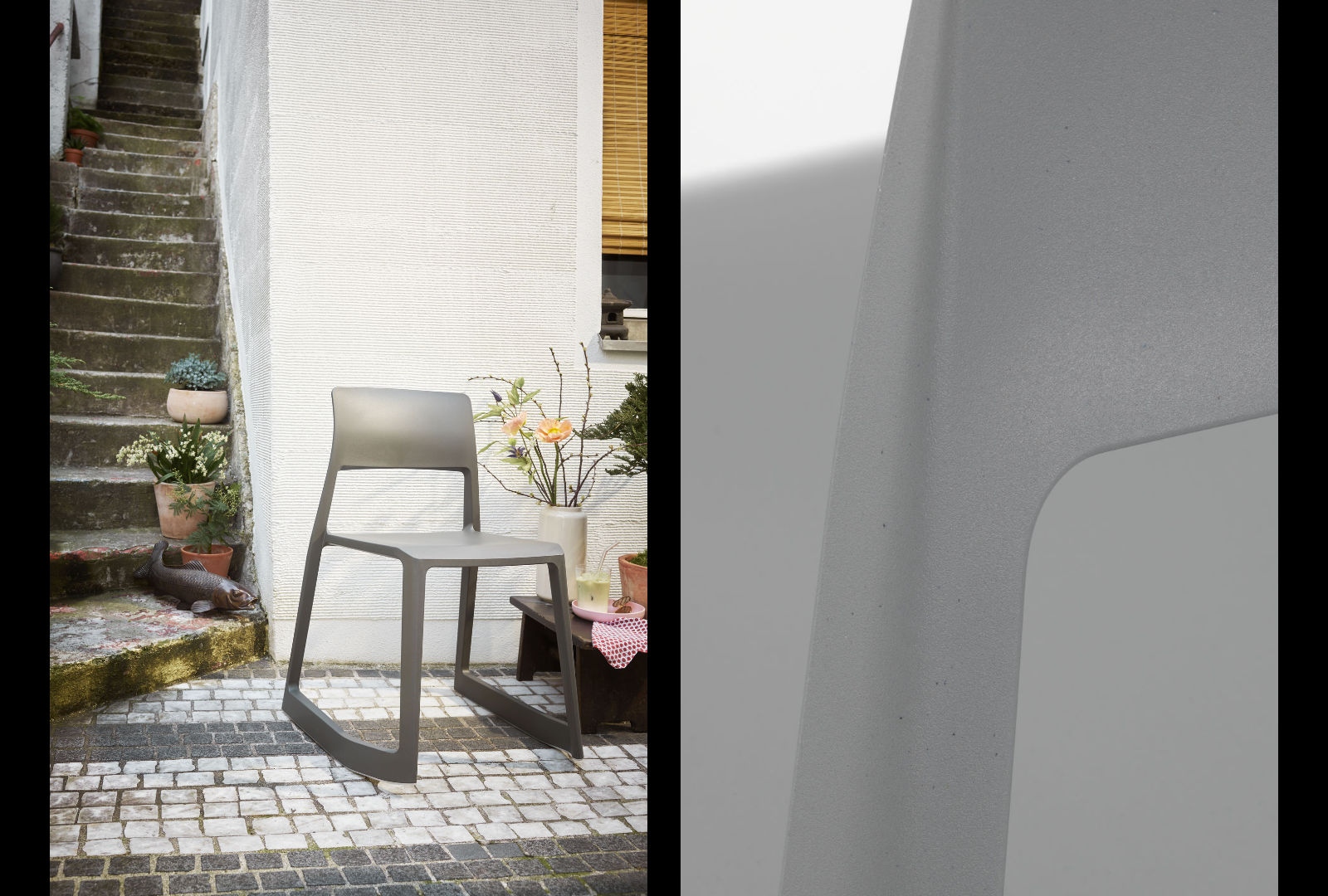 |
Tip Ton RE
It’s a chair made from 100% recyclable material. Where does the material come from and how does it end up at Vitra and how do you process it?
The plastic comes from the municipal waste management system in Germany, where recyclable materials are collected in the ‘Yellow Bag’. After metals and other composite materials have been separated, the plastic is shredded, cleaned and processed into a high-grade reusable granulate.
While many color variations are available for the original Tip Ton, Tip Ton RE only comes in grey. What is the reason behind this?
It’s very hard to separate the colours of recycled waste, so if you want to have specific colours, you have to add pigments or bleach, and we didn’t want to do that. We wanted to keep the material as clean as possible, so what you see is what you get. There are tiny specks of other colours in the grey, which vary slightly from chair to chair. But that adds interest and pushes our perception of plastics. The slight variations in the recycled material add depth and give it a story, similar to how the structure of a piece of wood tells you about the tree’s growth cycles.
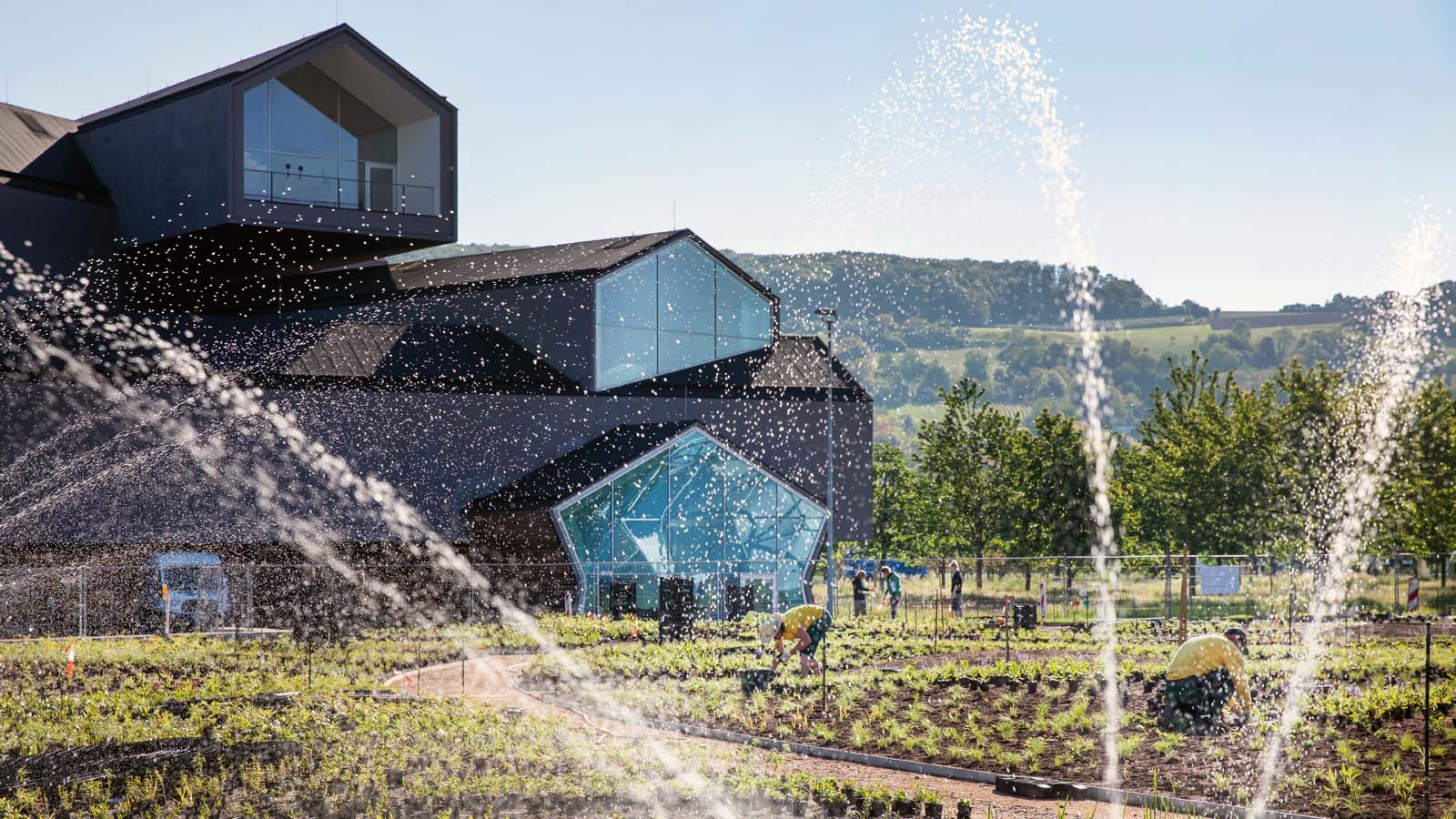
Oudolf Garten at Vitra Campus / Piet Oudolf
Does Vitra produce similar lines of sustainable and environmentally aware solutions?
At Vitra, we are working intensively to figure out where and how new materials can be employed, both for the current product range and also in the development of new products. We are definitely planning to make other products out of the material used for Tip Ton RE, like the already launched Toolbox RE.
Apart from choosing the right materials for production, what else do you think sustainability, as a concept, can include for Vitra?
Vitra upholds a culture of care and diligence, in which sustainability is not a project or corporate goal, but an entrepreneurial attitude. Sustainability finds expression in every activity: namely, in whom Vitra employs (43 nationalities, 33% women in management positions, 66% female Group Management). In how Vitra supports its employees (such as with a company daycare centre). In how Vitra designs the campus and renders it accessible to the public (for example the Oudolf Garten). In how Vitra develops and manufactures its products. In where Vitra sources its raw materials. In how Vitra organises its supply chain. In how the Vitra Campus buildings are operated (with energy from hydropower). And in how the latest insights into the impact of corporate action are seen as opportunities for further expansion.
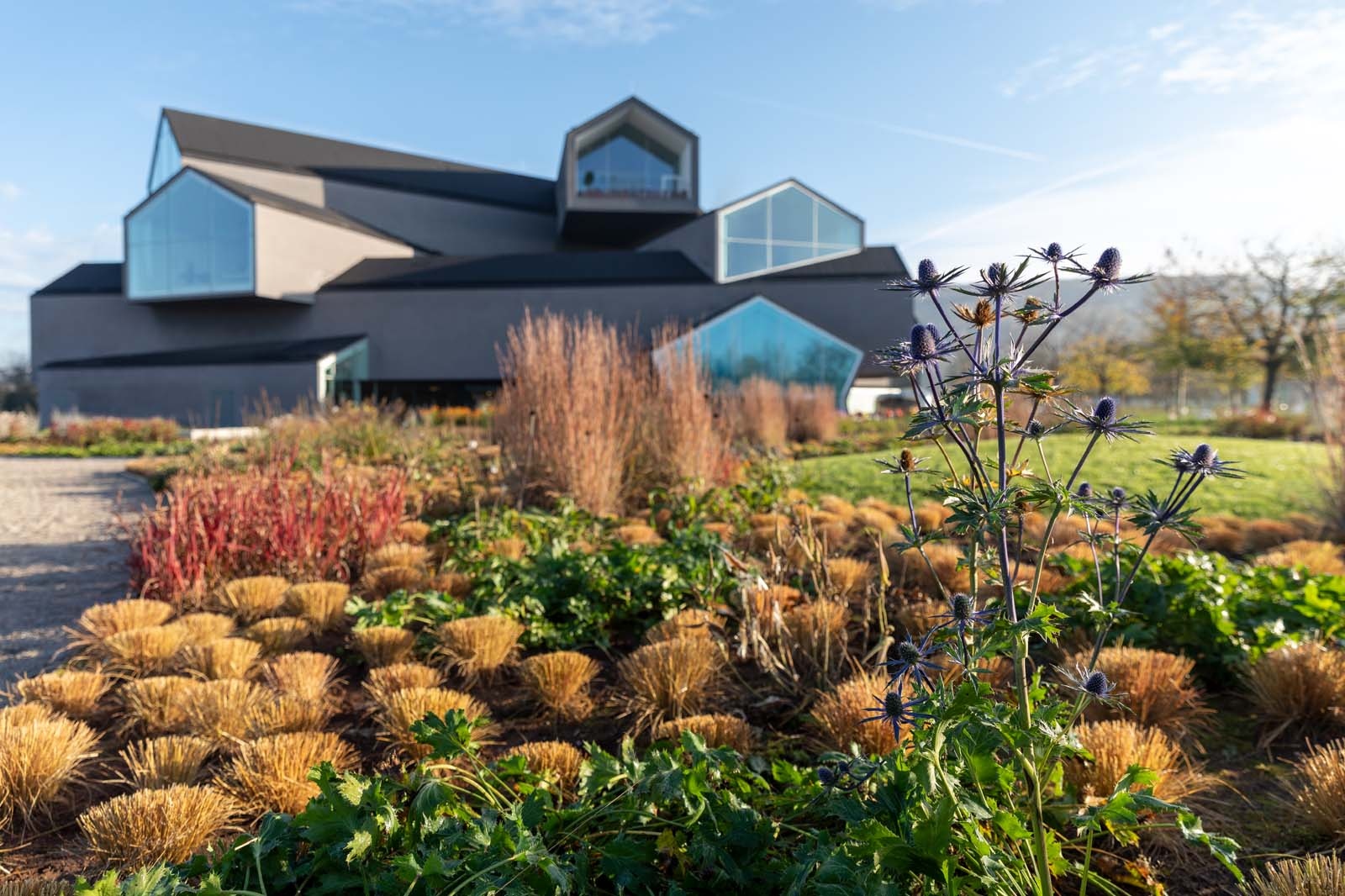
Oudolf Garten at Vitra Campus / Piet Oudolf
The issue of sustainability will be central to our event in 2021, as we are looking to bring you the best of local and international design brands with their unique approach to home solutions in the light of environmental awareness. Be sure to follow us on our official Facebook and Instagram pages for the latest in the world of design, and join us at the Budapest Aréna between September 24-26 for an unforgettable weekend!
Cover image: Tip Ton RE

